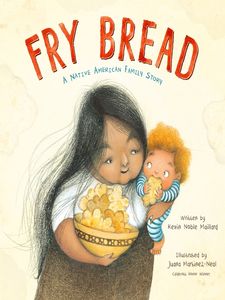Genre: fantasy, realistic fiction
Awards: Caldecott Honor, 2017
New York Times Notable Children's Book
National Public Radio Best Book of 2016
Horn Book Best Book of 2016
Huffington Post Best Picture Book of 2016
Summary:
In a small village, an old woman lived with her very large family in a very small home. The woman had a lot of sweaters to knit in preparation for the winter. She had all her yarn, but she could not seem to get any work done so, she packed her things and left, yelling, "Leave Me ALONE!" She went to a forest but was bothered by a family of bears. She went to a cold mountainside but couldn't escape a herd of goats. She even went all the way to the moon, but she couldn't get away from the curious aliens. Finally, the old woman stepped through a wormhole into a space void; she finally completed all her sweaters but realized that she was lonely. She stepped back through the wormhole, right back into her family's home.
Teacher Evaluation:
This story would be beneficial for students in first or second-grade classrooms. I would use it to discuss ways to communicate our needs or feelings. Teachers could talk about the different seasons and how our needs change with the seasons. Learners could group up to create a chart with some basic necessities for the seasons and present them to the class. We could also discuss different environments such as a forest, a mountain, and space. We could think about what we would need to survive in different areas. Students could find information about the different environments such as natural resources and other creatures that live there.




















